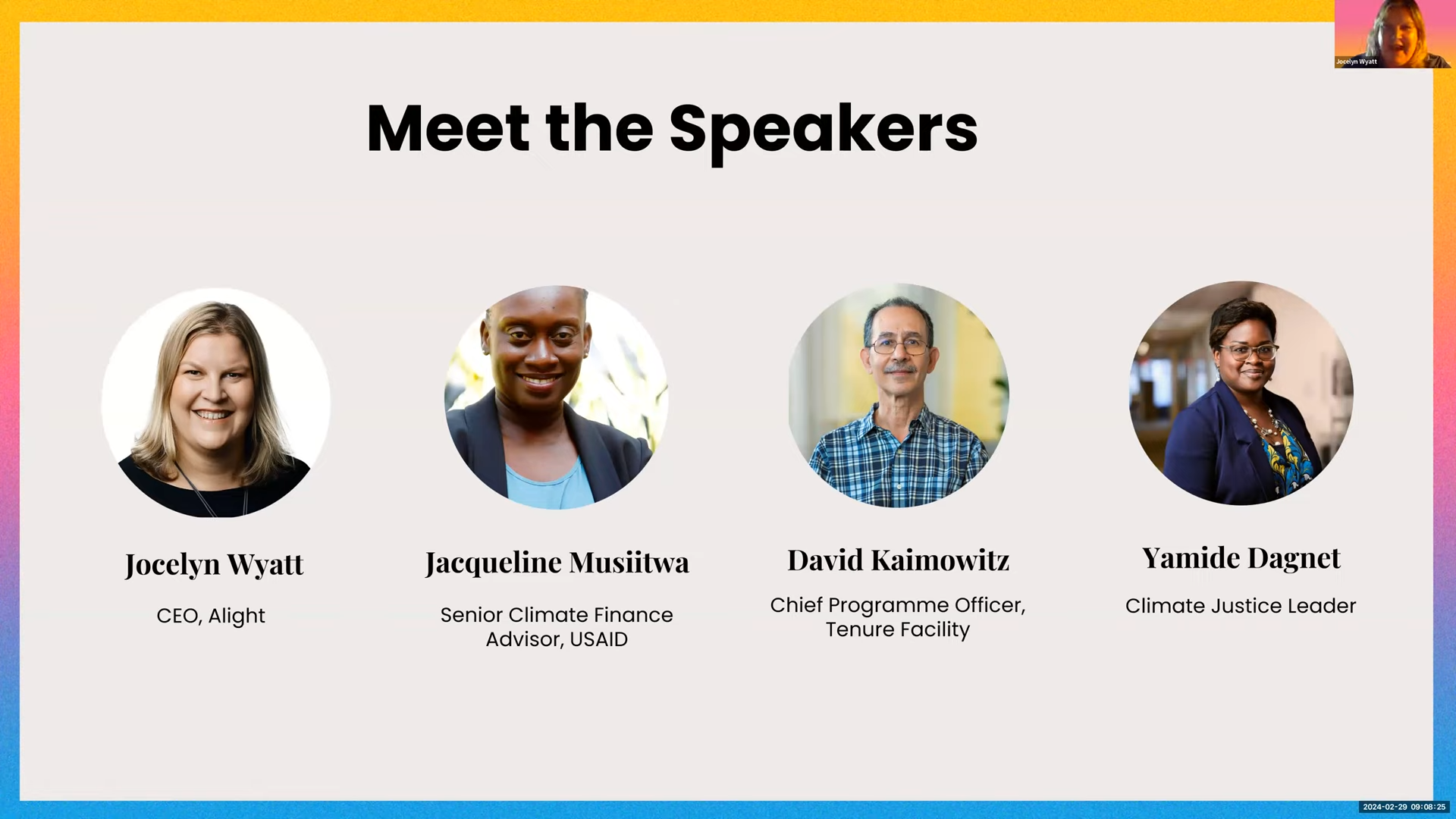2024-03-06
by Jeremy Gaunt
While changes in climate around the world are displacing millions of people and contributing to a global refugee crisis, the main challenge before Indigenous Peoples is to stay put on the land they live on.
They are constantly defending themselves from having to seek sanctuary elsewhere.
Such defence, however, not only allows people to adhere to their traditional homes. It bolsters the fight against climate change itself, given that Indigenous Peoples and traditional communities are the best guardians of their environments.
That was the message from Tenure Facility Chief Programme Officer David Kaimowitz at a webinar hosted by humanitarian organisation Alight to discuss climate displacement.
Alight cited data that one in every 73 people has been displaced, coming in at around 110 million people globally.
Most have been displaced by persecution and conflict, but a growing number – perhaps underrepresented in the 110 million – have been displaced by climate.
But while working to help the displaced adjust is crucial, Kaimowitz underlined the different challenges faced by Indigenous Peoples.
“Our main link to the displacement issue is to help people be able to not be displaced, to defend their territories, to be able to manage their resources in such a way that they can adapt to climate change,” he said.
This does not mean the work of Tenure Facility, which channels funds to grass-roots indigenous organisations to protect lands, is unrelated to displacement.
“The reason people defend their territories.” Kaimowitz said, “is because they’re grounded in their territories. They know how the forest works; they know how to survive.”
And when it comes to climate justice – a concept that puts human rights at the core of decision-making and action regarding climate change – Indigenous Peoples represent families and communities that have historical rights.

"The reason people defend their territories is because they're grounded in their territories. They know how the forest works; they know how to survive."
Threats to the environment
Kaimowitz also noted another link between the defence of indigenous lands and the environment – the kinds of people who generally threaten traditional living areas such as forests.
“A lot of the people that we’re working with, they’re being displaced … by groups that are responsible for causing climate change,” he said.
“Whether it be the mining, the oil drilling, the palm plantations … (it is) these activities that are actually doing huge damage to the planet and making this whole problem much worse.”
Speaking for Alight, Chief Executive Officer Jocelyn Wyatt said despite all the help being given across the world – from organisations such as her own – climate displacement was likely to become an even bigger crisis.
“Over the coming years and decades, we’re going to see more and more people that are displaced, either within their own countries or across borders due to climate emergencies, things like floods, or droughts, or wildfires,” she said.
While wildfires in California and Hawaii have brought the issue home to wealthier countries, it is the poorer, developing ones that have been the main victims.
“We see them happening all over the world. We are … currently responding to climate emergencies in the Horn of Africa and Somalia, and Kenya and Ethiopia, which have experienced years of drought and massive food insecurity.
“We responded to climate emergencies in Pakistan, where a third of the country was underwater. And we’re currently working in the Philippines setting up systems so that health systems can continue to function when there are massive storms and typhoons and floods.”
Other speakers were USAID adviser Jacqueline Musiitwa, who spoke of the challenges of mobilising US$150 billion of public and private climate finance by 2030, and climate justice specialist Yamide Dagnet, who talked about dealing with climate “loss and damages”, the negative impact of environmental degradation in societies.
Articles